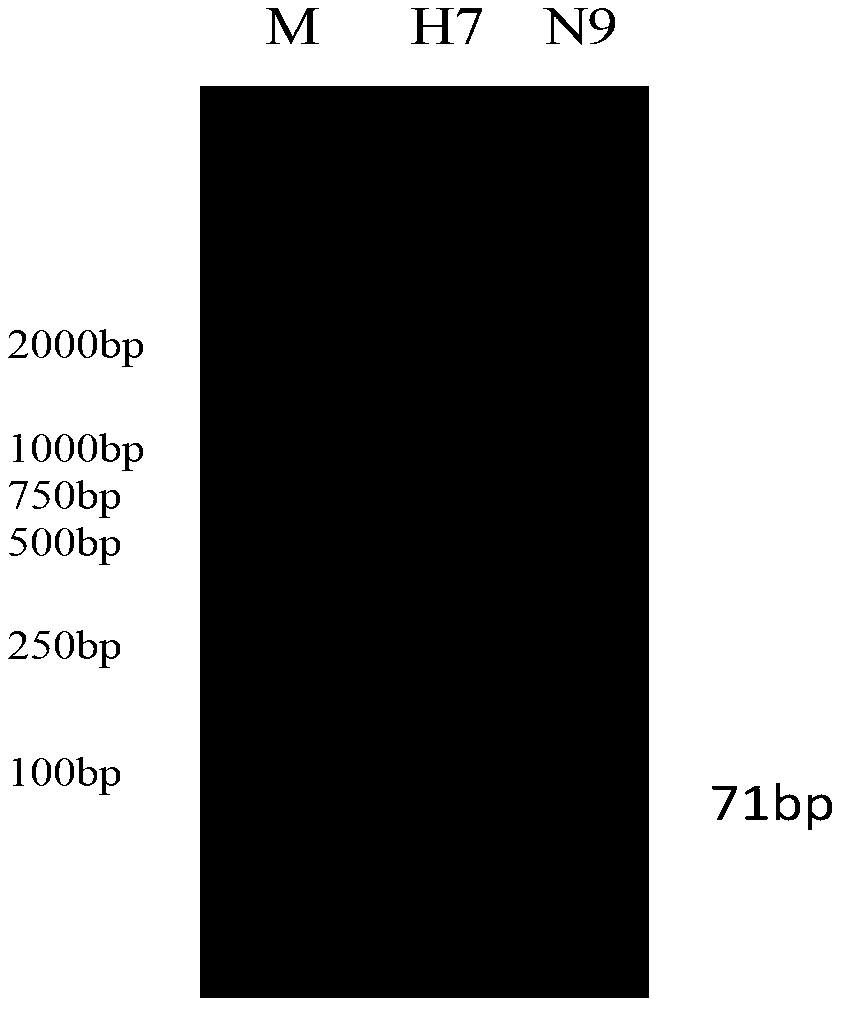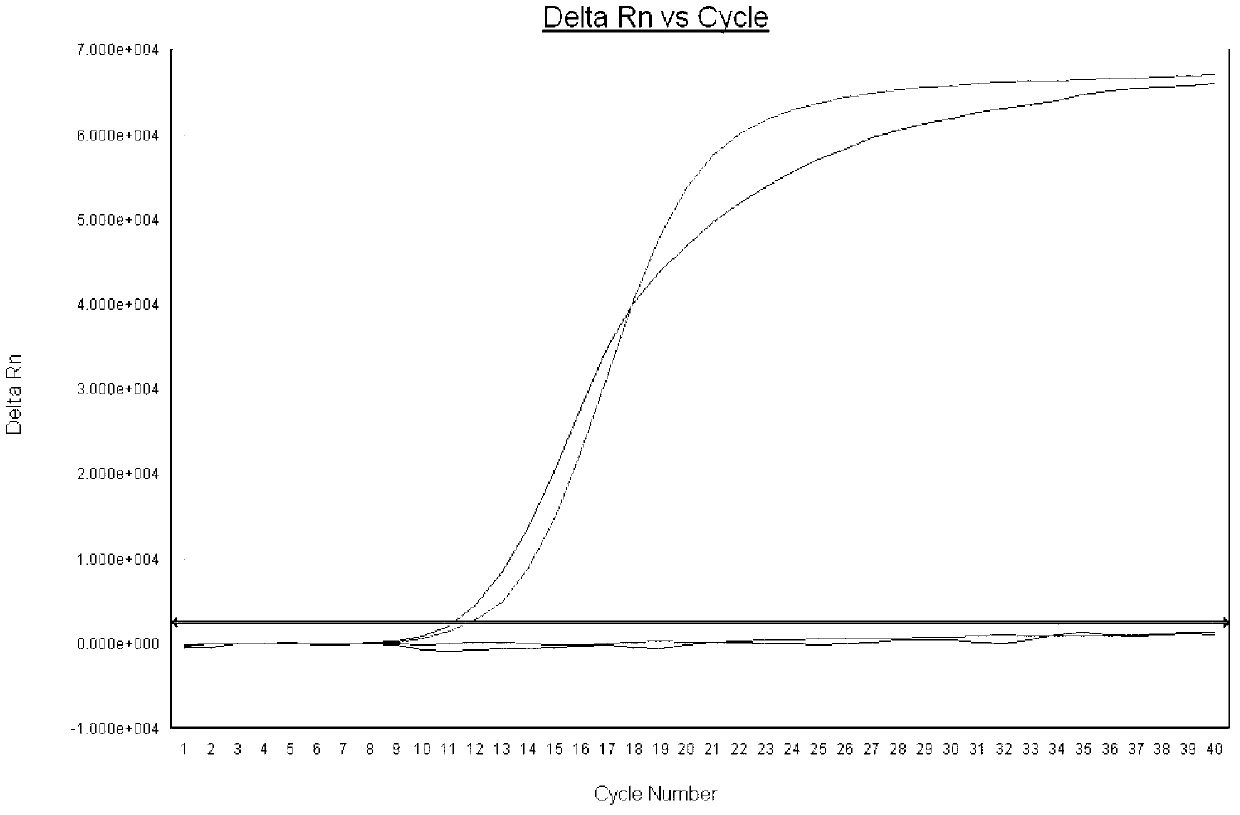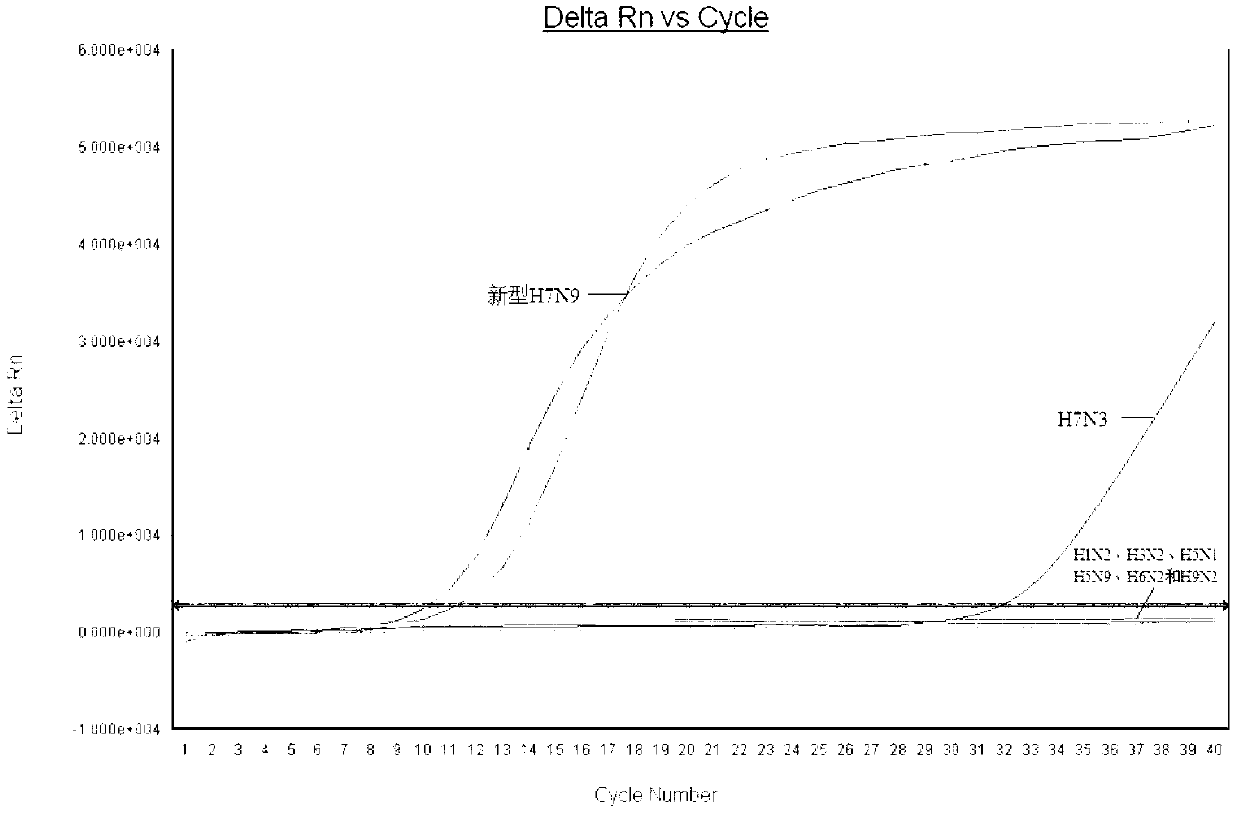Multiple-fluorescence reverse transcription-polymerase chain reaction (RT-PCR) kit for rapid detection of novel H7N9 subtype avian influenza virus and detection method thereof
A RT-PCR and avian influenza virus technology, applied in the field of molecular detection, can solve problems such as virus mutation, fragment recombination, and immune preparations cannot play a protective role
- Summary
- Abstract
- Description
- Claims
- Application Information
AI Technical Summary
Problems solved by technology
Method used
Image
Examples
Embodiment 1
[0031] Example 1 Establishment of multiple fluorescent RT-PCR detection system for novel H7N9 subtype avian influenza virus
[0032] 1. Materials
[0033] Antigens: H1N2, H3N2, H5N1, H5N9, H6N2, H7N3 and H9N2 avian influenza antigens were purchased from Harbin Veterinary Research Institute. The novel H7N9AIV nucleic acid is cDNA after reverse transcription of RNA, from the Chinese Center for Disease Control and Prevention.
[0034] Reagents and instruments: DNA / RNA magnetic bead extraction kit, purchased from Shenzhen Yirui Biotechnology Co., Ltd.; One Step RT-PCR kit, DNA gel recovery kit, plasmid extraction kit, DL2000DNA Mark, pMD18-T Purchased from Bao Bioengineering (Dalian) Co., Ltd.; Ultraviolet Spectrophotometer NanoDrop ND-1000, Thermo Fisher Scientific, USA; ABI7500Fast Real-Time PCR System, Applied Biosystems, USA.
[0035] 2. Experimental methods and results
[0036] 2.1 Primers and probes
[0037] Download the hemagglutinin antigen (HA) gene sequence (GenBank:...
Embodiment 2
[0049] Example 2 Specificity Experiment
[0050] Take H1N2, H3N2, H5N1, H5N9, H6N2, H7N3, H9N2 avian influenza virus RNA and the cDNA of the new H7N9 as templates respectively, identify with the multiple fluorescent RT-PCR system established in Example 1, and verify the specificity of the established method , see the test results image 3 . Depend on image 3 It can be seen that only the H7 and N9 of the H7N9 sample amplified two standard S-shaped curves. In the other samples, only the H7 detection of the H7N3 sample showed specific amplification, and other reference viruses had no fluorescence growth, indicating that the established method can detect All new and old H7 subtype viruses and new N9 subtype viruses have the ability to distinguish the original N9 subtype viruses.
Embodiment 3
[0051] Example 3 Sensitivity experiment
[0052] 1×10 respectively 0 ~1×10 7 copies / μL of eight concentration gradients of positive standard plasmids were used as templates for multiplex fluorescence RT-PCR. Add 5 μL of reaction template to 25 μL of RT-PCR system. Depend on Figure 4 It can be seen that the lowest concentration at which both H7 and N9 have obvious S-shaped amplification curves is 10 copies, that is, the minimum detection limit of this method for both H7 and N9 is in the order of 10 copies.
PUM
 Login to View More
Login to View More Abstract
Description
Claims
Application Information
 Login to View More
Login to View More - R&D
- Intellectual Property
- Life Sciences
- Materials
- Tech Scout
- Unparalleled Data Quality
- Higher Quality Content
- 60% Fewer Hallucinations
Browse by: Latest US Patents, China's latest patents, Technical Efficacy Thesaurus, Application Domain, Technology Topic, Popular Technical Reports.
© 2025 PatSnap. All rights reserved.Legal|Privacy policy|Modern Slavery Act Transparency Statement|Sitemap|About US| Contact US: help@patsnap.com



